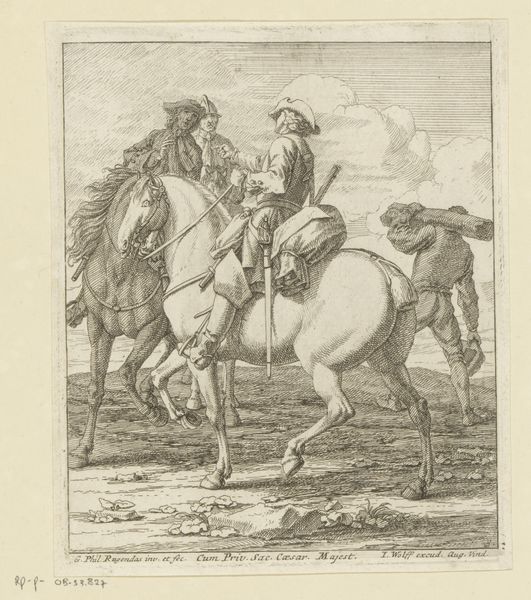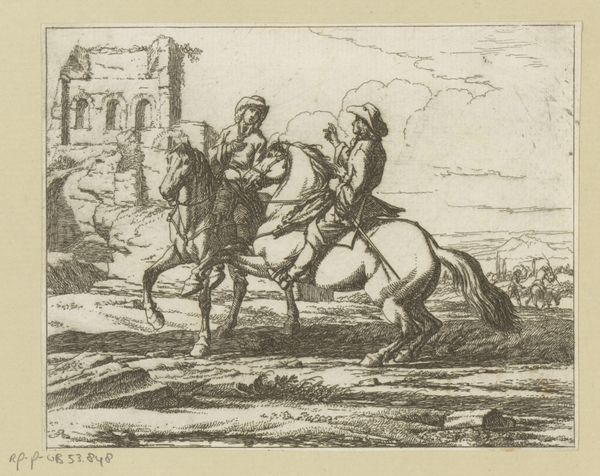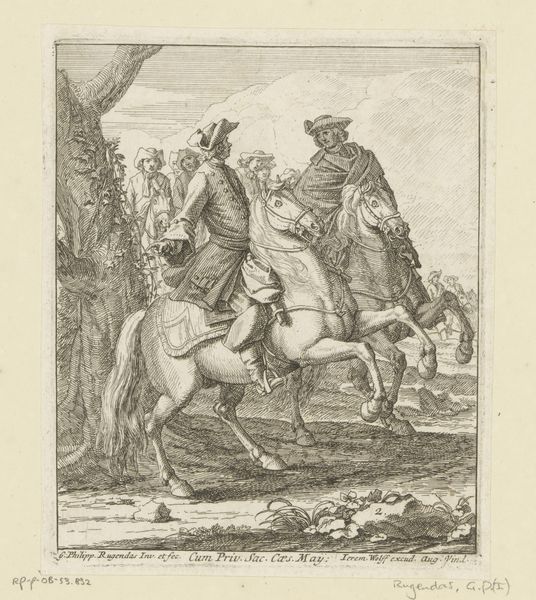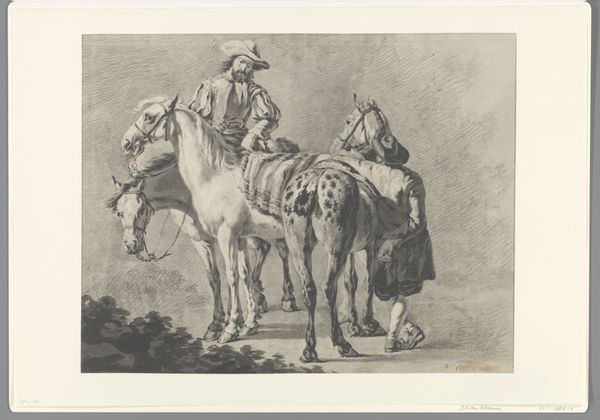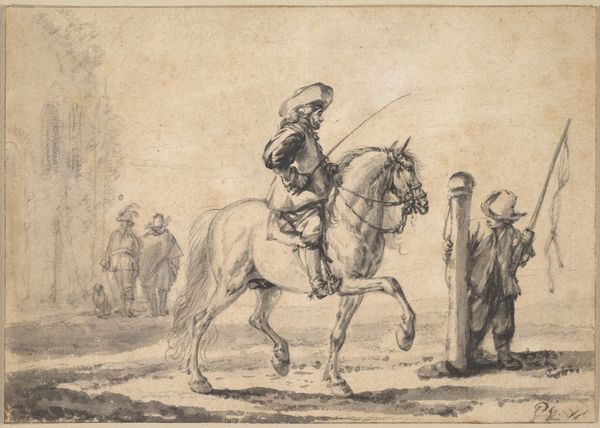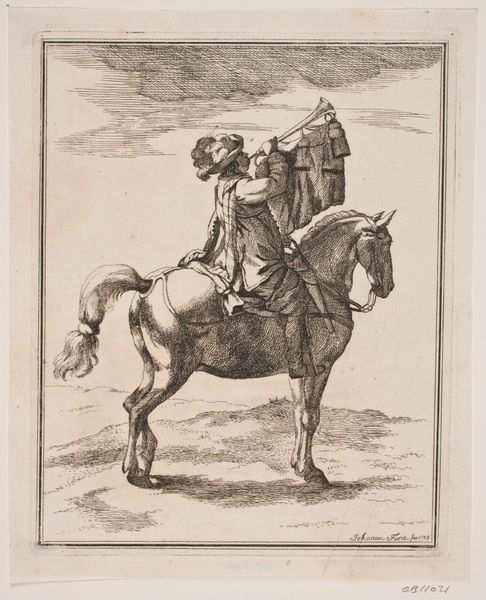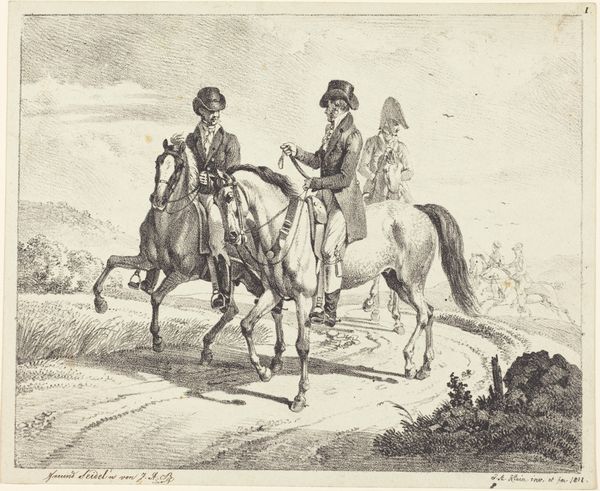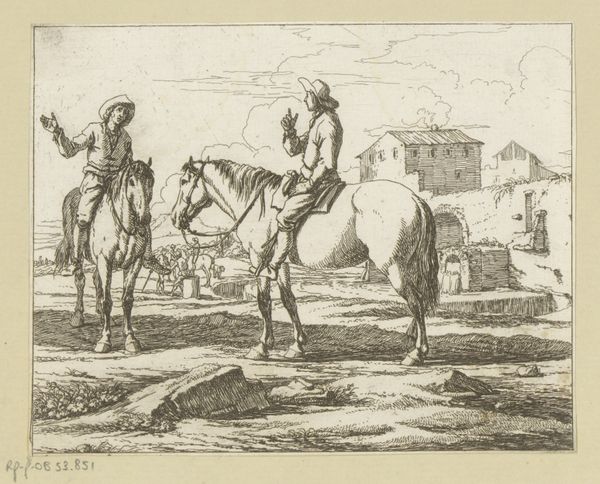
print, engraving
landscape
genre-painting
history-painting
engraving
Dimensions: height 164 mm, width 136 mm
Copyright: Rijks Museum: Open Domain
Editor: Here we have “Group of Smoking Horsemen Conversing,” made between 1676 and 1742 by Georg Philipp Rugendas. It's an engraving, and it really gives me a sense of a casual moment captured on a journey. What’s most striking to you about this piece? Curator: I'm immediately drawn to the socio-economic implications of the materials and process. Engraving, as a printmaking method, inherently democratizes image production. How does the accessibility of prints like this challenge traditional hierarchies in art and patronage during this period? Editor: That's a great point! I hadn't thought about the production side. So, instead of a unique painting for the wealthy, this could be distributed more widely? Curator: Precisely. Think about the copper plate, the labor of the engraver, and the eventual distribution network. It allows for the dissemination of imagery and, potentially, ideology, far beyond the confines of the aristocratic elite. Do you see any indications of a specific market this print was targeting? Editor: Well, given the subject matter – horsemen, landscape, maybe a military feel – could it have been appealing to those with military interests, perhaps even serving soldiers? Making art that spoke to everyday experiences… Curator: Exactly! And how might that reflect changing notions of art's function? Rugendas seems to be depicting genre-painting meets history-painting; there is the material, the mode of representation, and then it points towards something... Editor: This has completely changed how I see this work. It's not just a scene, but a product of its time, speaking to a different audience. Curator: Absolutely. Analyzing art through the lens of production and consumption opens up entirely new avenues for understanding its social role.
Comments
No comments
Be the first to comment and join the conversation on the ultimate creative platform.
